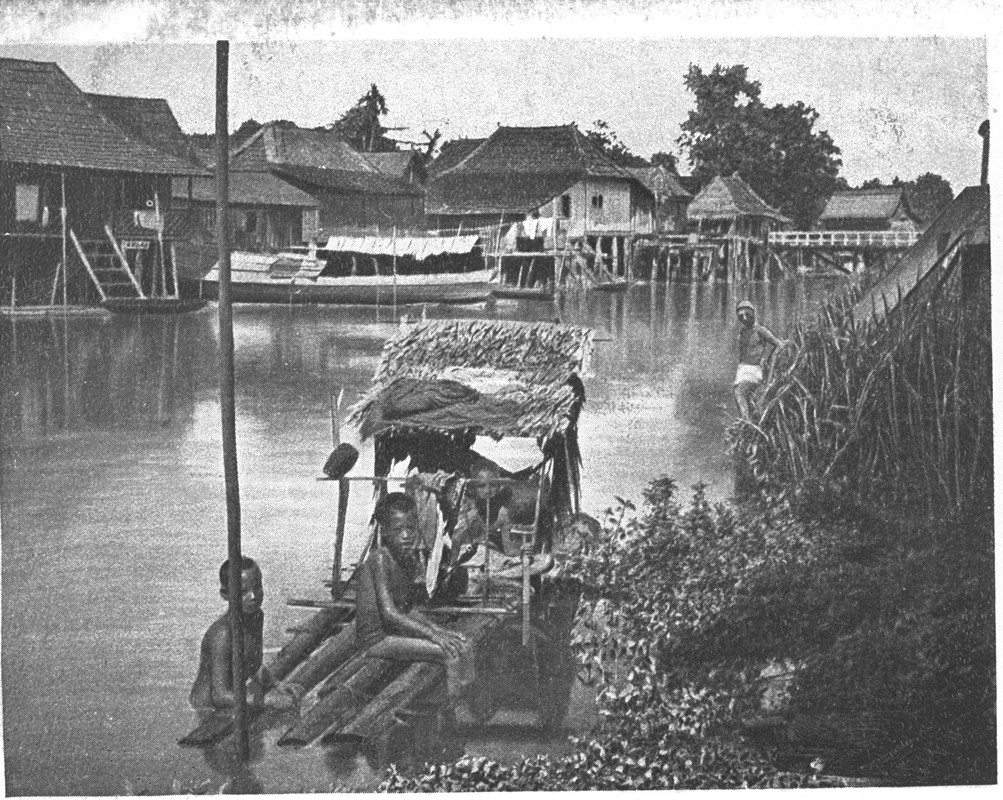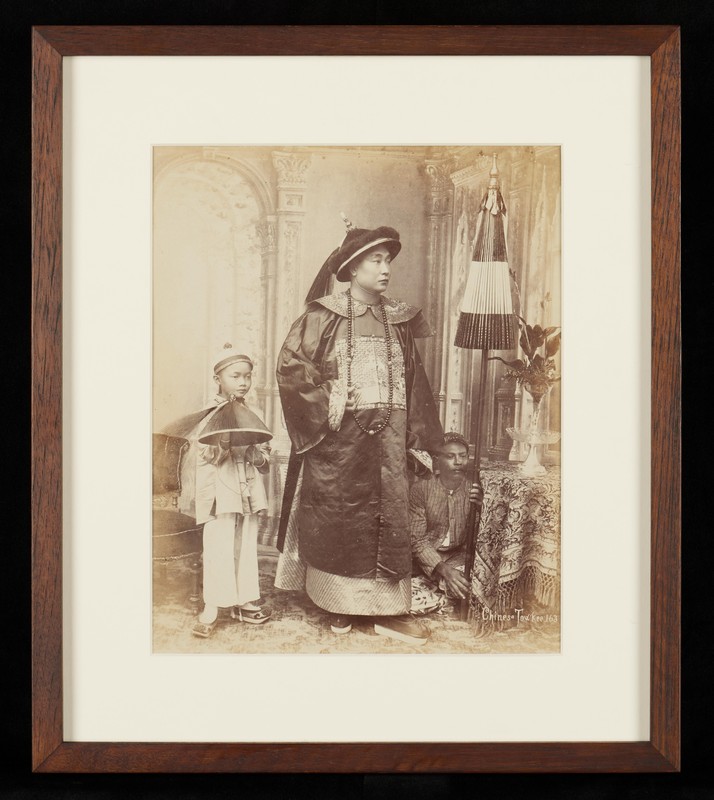Temple of the Teochews: Yueh Hai Ching Temple
Yueh Hai Ching Temple (or Wak Hai Cheng Bio) in Phillip Street is the oldest and most representative of Singapore’s many Teochew temples. Built by Teochew immigrants from South China who had sailed to Singapore for business, the ancient temple started out as a shrine to the sea goddess Mazu. The exact year the shrine was founded is unknown, although inscriptions on lintels inside the temple suggest it was built before 1826.
After Teochew immigrants reached Singapore, they usually visited the temple to thank Mazu for a safe journey, as well as pray for blessings and protection. Besides Mazu, the temple is also dedicated to the deity Xuan Tian Shang Di (Highest Heavenly Deity), whom the Teochews address reverently as Tua Lao Ya (The Great Lord).1
Yueh Hai Ching Temple quickly became the centre of faith for the local Teochews. It was managed by Ngee Ann Kongsi from 1845 onwards and rebuilt from 1852 to 1855 with funds from the Teochews in Singapore. The temple, which was gazetted as a national monument in 1996, has gone through several renovations over the years. In 2014, it won the Award of Merit in the UNESCO Asia-Pacific Heritage Awards for Cultural Heritage Conservation.
The building reflects traditional Teochew architectural features. For example, its roof features colourful ceramic figurines — of dragons and Chinese legendary figures — adorned with porcelain shards using a method known as jian nian (“cut and paste”). The temple also houses many cultural relics of historical value, including incense burners, couplets, plaques, decorative clappers, bronze copper bells, honour guard plaques, and stone tablets. A gilded plaque bestowed by the Qing dynasty’s Guangxu Emperor in 1896, with the words shu hai xiang yun (“auspicious cloud above the sea at dawn”), is a particularly treasured item.


The third day of the third month on the lunar calendar is the birthday of Tua Lao Ya, and the 23rd day of that month is the birthday of Mazu. Yueh Hai Ching Temple celebrates these occasions with theatrical performances and festivities. In the early days, the deities’ procession (yah lao ya) and festivities from the 10th to 12th months of the lunar calendar were the most important religious activities of the ancient temple, and the area around the temple would be packed with people. Besides Teochew devotees, other dialect groups like the Cantonese, Hakka, and Hainanese also participated in this grand event. The Teochew community dedicated significant labour and resources to turn the annual deities’ procession into a community festival that was celebrated by everyone. This met the religious and spiritual needs of many immigrants.
As the number of Teochew immigrants increased, Yueh Hai Ching Temple grew increasingly popular. From 1912, the temple contributed its surplus funds from offerings to the Tuan Mong school set up by the Teochew community, extending the ancient temple’s social role to educational causes.
The Teochew community also used the temple festivities and gatherings as opportunities to strengthen their bonds, foster a sense of unity, exchange employment information, and facilitate business connections. The ancient temple became a hub for activities within the Teochew community and a symbol of the spirit of unity and mutual assistance among the Teochew people in Singapore.
Transcending clan boundaries
Even though it belonged to the Teochew people, Yueh Hai Ching Temple transcended clan boundaries from the very start, opening its doors to devotees of different backgrounds. The temple still displays plaques which were dedicated by individuals from various dialect groups such as Cantonese, Hakka, and Hainanese in the early years.
Before the Teochews established their clan associations, Yueh Hai Ching Temple was the Teochew community’s institution for arbitration. Additionally, before the establishment of the Singapore Kwangtung Hui Kuan, if a significant incident happened within the Chinese community, leaders in the overseas Chinese community usually convened meetings under the banner of Yueh Hai Ching Temple, gathering representatives from various counties of the Guangdong province. These gatherings would address external affairs related to the regions.
Yueh Hai Ching Temple, with the strong backing of Teochew clans, played a significant role in connecting, uniting, and leading Guangdong province-associated clans in the early years of Chinese immigration to Singapore. The temple served as a unifying force among those clans, contributing in a way to the integration and coordination of different dialects groups from the Guangdong region.
Today, Yueh Hai Ching Temple continues to attract many visitors and devotees. Annual celebrations such as Tua Lao Ya’s Birthday, Mazu’s Birthday, and traditional festivals like Chinese New Year and the Mid-Autumn Festival draw crowds of people who offer prayers and seek blessings for peace and prosperity. The ancient temple continues to fulfil its role as a place of worship and remains a landmark for Singapore’s Teochew community today.
This is an edited and translated version of 新加坡潮州人的庙宇——粤海清庙. Click here to read original piece.
| 1 | Yueh Hai Ching temple is also commonly known as the Tua Lao Ya Temple. |
Lee, Chee Hiang. “Xinjiapo gucha yuehai qingmiao chuchuang shishi kaolüe” [Research on archives related to the founding of Yueh Hai Ching Temple]. Huaqiao huaren wenxian xuekan 7 (2018): 3– | |
Lim, Wei Yi. “Wanshishun gongsi yu Xinjiapo chaozhouren de mazu jisi” [Ban See Soon Kongsi and the Mazu worship of Teochews in Singapore]. In Bainian Huimou: Mahua shehui yu zhengzhi [Looking Back the Hundred Years: Malaysian Chinese Society and Politics], edited by Hou Kok Chung, 140– Kuala Lumpur: Centre for Malaysian Chinese Studies, 2005. | |
Phua, Chay Long. Malaiya chaoqiao tongjian [History of Malayan Teochews]. Singapore: Nantao Publishing House, 1950. | |
Tan, Sumiko. Ngee Ann Kongsi: Into the Next Millennium. Singapore: Ngee Ann Kongsi, 2005. |










